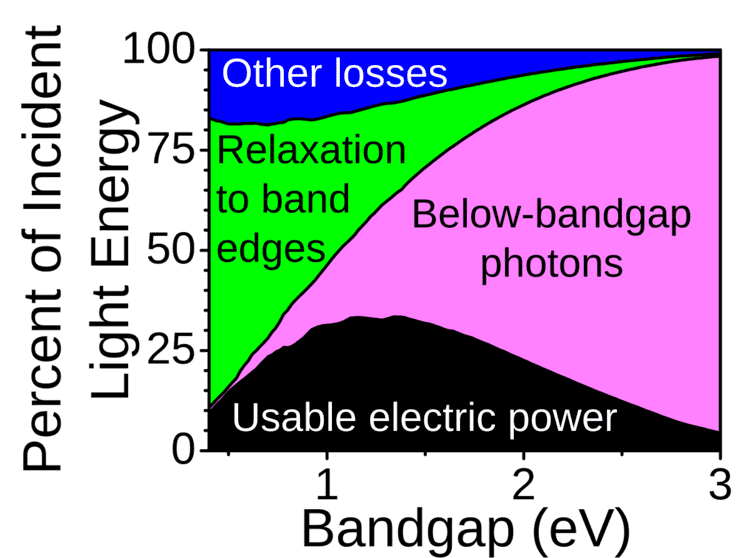 | ||
In solar cell research, carrier multiplication is the phenomenon wherein the absorption of a single photon leads to the excitation of multiple electrons from the valence band to conduction band. In the theory of a conventional solar cell, each photon is only able to excite one electron across the band gap of the semiconductor, and any excess energy in that photon is dissipated as heat. In a material with carrier multiplication, high-energy photons excite on average more than one electron across the band gap, and so in principle the solar cell can produce more useful work.
In quantum dot solar cells, the excited electron in the conduction band interacts with the hole it leaves behind in the valence band, and this composite uncharged object is known as an exciton. The carrier multiplication effect in a dot can be understood as creating multiple excitons, and is called multiple exciton generation (MEG). MEG may considerably increase the energy conversion efficiency of nanocrystal based solar cells, though extracting the energy may be difficult because of the short lifetimes of the multiexcitons.
The quantum mechanical origin of MEG is still under debate and several possibilities have been suggested:
All of the above models can be described by the same mathematical model (density matrix) which can behave differently depending on the set of initial parameters (coupling strength between the X and multi-X, density of states, decay rates).
MEG was first demonstrated in 2004 using colloidal PbSe quantum dots and later was observed for quantum dots of other compositions including PbS, PbTe, CdS, CdSe, InAs, Si, and InP. Multiple exciton generation was also detected in semiconducting single-walled carbon nanotubes (SWNTs) upon absorption of single photons. For (6,5) SWNTs, absorption of single photons with energies corresponding to three times the SWNT energy gap results in an exciton generation efficiency of 130% per photon. The multiple exciton generation threshold in SWNTs can be close to the limit defined by energy conservation.
Graphene, which is closely related to nanotubes, is another material in which multiple exciton generation has been observed.
Double-exciton generation has additionally been observed in organic pentacene derivatives through singlet exciton fission with extremely high quantum efficiency.
